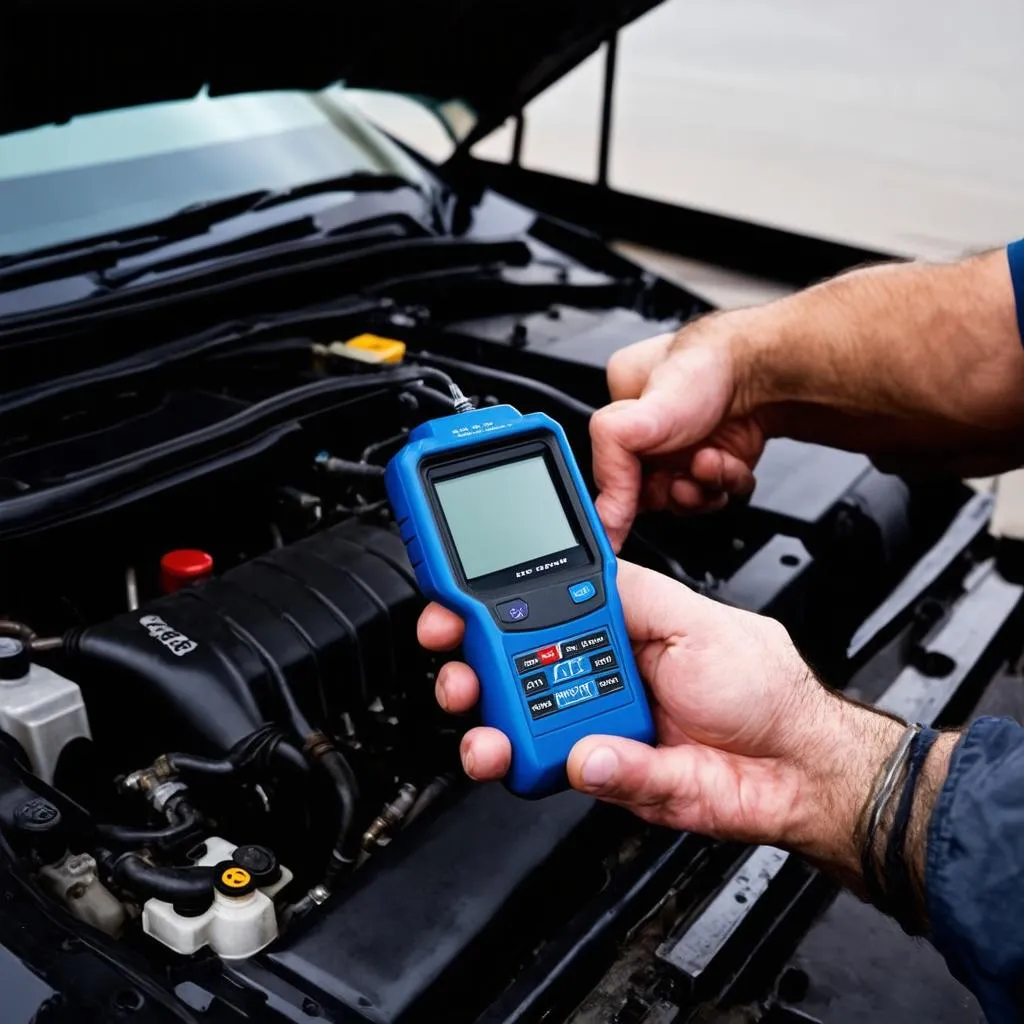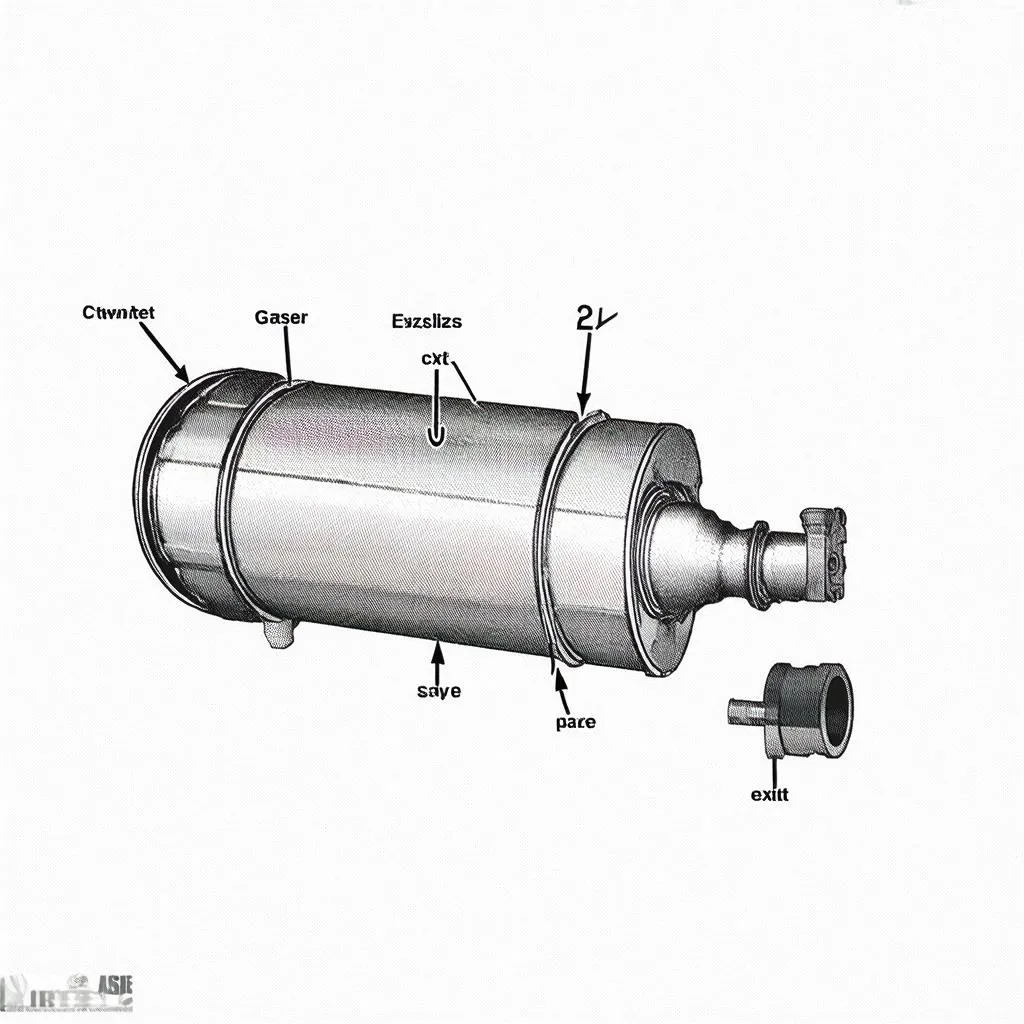“Ding!” The dreaded check engine light blinked on as Sarah, a resident of sunny San Diego, California, cruised down Highway 101. Her trusty 2017 Honda Accord, usually a beacon of reliability, now seemed shrouded in uncertainty. A quick trip to her mechanic and a scan later, the verdict was in: OBD code P0420 – Catalyst System Efficiency Below Threshold (Bank 1). Sarah, like many car owners facing this cryptic code, was left wondering: “What does it mean, and how much is this going to cost me?”
Demystifying OBD Code P0420
Before we dive into the nitty-gritty, let’s understand what this code signifies. In simple terms, your car’s onboard computer, like a vigilant guardian of emissions, has detected that the catalytic converter, responsible for converting harmful pollutants into less harmful substances, isn’t working as efficiently as it should. The “Bank 1” refers to the side of the engine with cylinder #1.
“Many car owners underestimate the crucial role a well-functioning catalytic converter plays in not only protecting the environment but also ensuring optimal engine performance,” says automotive expert Michael Turner, author of “The Complete Guide to Automotive Diagnostics.”
Causes and Symptoms
A P0420 code can be triggered by a number of culprits, ranging from simple fixes to more complex issues:
- Faulty Oxygen Sensors: Oxygen sensors, the unsung heroes of your car’s emissions system, monitor the oxygen content in the exhaust stream. A malfunctioning sensor can send inaccurate readings, leading to a false P0420 code.
- Catalytic Converter Failure: This is the most dreaded, and often expensive, reason for a P0420 code. Over time, the catalytic converter can become damaged due to various factors like engine misfires, excessive oil consumption, or the use of contaminated fuel.
- Exhaust Leaks: Any leaks in the exhaust system, even seemingly minor ones, can disrupt the delicate pressure balance and throw off the oxygen sensor readings.
- Engine Performance Issues: Problems like misfires, rich fuel mixtures, or faulty spark plugs can overload the catalytic converter, leading to premature failure.
Troubleshooting and Solutions
Diagnosing the root cause of a P0420 code often requires the expertise of a qualified mechanic. Here’s a general approach:
- Inspect for Exhaust Leaks: A thorough visual and auditory inspection of the exhaust system is the first step. Look for any signs of cracks, holes, or loose connections.
- Check Oxygen Sensor Functionality: Using a professional-grade OBD-II scanner, a mechanic can monitor the oxygen sensor readings in real-time to identify any inconsistencies.
- Test Catalytic Converter Efficiency: Specialized tests can determine the health and efficiency of your catalytic converter.
Once the culprit is identified, the appropriate repair can be made. Replacing a faulty oxygen sensor is a relatively straightforward and inexpensive fix. However, a failing catalytic converter often necessitates replacement, which can be a significant investment.
Preventing Future P0420 Codes
Taking proactive measures can significantly reduce the risk of encountering the dreaded P0420 code again:
- Regular Maintenance: Adhering to your car manufacturer’s recommended maintenance schedule, including regular oil changes and tune-ups, can prevent many engine-related issues that contribute to catalytic converter failure.
- Quality Fuel: Using high-quality fuel from reputable gas stations can prevent contamination that damages the catalytic converter.
- Address Engine Issues Promptly: Ignoring engine misfires or other performance issues can put undue stress on the catalytic converter, shortening its lifespan.
FAQs About OBD Code P0420
Q: Can I still drive my car with a P0420 code?
A: While your car might still be drivable, it’s crucial to address the issue promptly. Ignoring it can lead to further damage and more expensive repairs down the line.
Q: How much does it cost to fix a P0420 code?
A: The repair cost varies widely depending on the underlying cause. Replacing a faulty oxygen sensor might cost a few hundred dollars, while a new catalytic converter can set you back over a thousand.
Q: Are aftermarket catalytic converters a good option?
A: While aftermarket catalytic converters are generally less expensive, it’s essential to choose a reputable brand that meets your car’s specific emissions standards.
Need Help with Your Car’s Diagnostics?
Dealing with car troubles can be stressful and confusing. If you’re facing any issues with your car’s diagnostics, including OBD codes, our team of expert mechanics at Tech Car USA is here to help. Contact us via Whatsapp at +84767531508 for 24/7 support and assistance with installing diagnostic tools.
 OBD Scanner in use
OBD Scanner in use
Conclusion
While encountering a P0420 code can be concerning, understanding its implications and taking appropriate action can save you from potential headaches and costly repairs down the road. Remember, regular maintenance and a proactive approach to car care are key to keeping your vehicle running smoothly and efficiently for years to come.
 Catalytic Converter Diagram
Catalytic Converter Diagram
Explore our website for more helpful articles and guides on common car issues:
We encourage you to share your thoughts and experiences in the comments below. Have you ever encountered a P0420 code? What steps did you take to resolve it? Your insights might help fellow car owners facing similar issues!